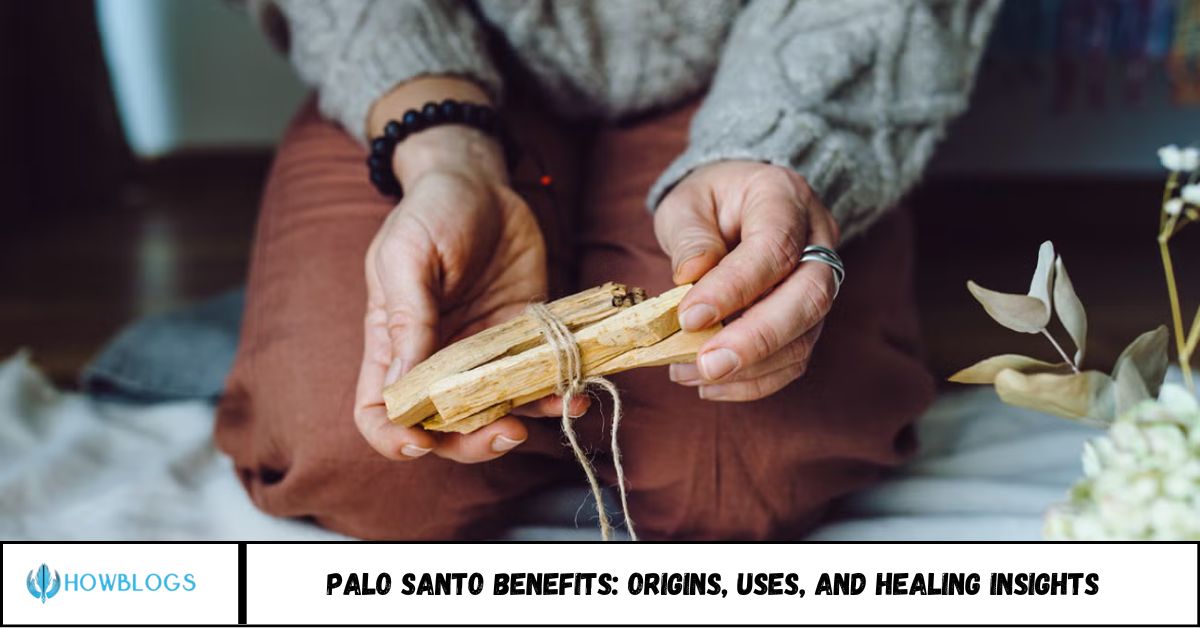Table of Contents
Where Does Palo Santo Come From and What Is It Used For
Palo Santo, known as “holy wood”, is a sacred tree native to South America. Used for centuries in spiritual rituals, energy cleansing, and traditional medicine, it’s now popular worldwide in aromatherapy, holistic wellness, and mindfulness practices. This article explores where Palo Santo comes from, its cultural significance, modern-day uses, and key things to know before buying or burning it.
Palo Santo (Bursera graveolens), often called “holy wood,” is a sacred tree native to South America renowned for its aromatic fragrance and centuries-old spiritual and medicinal uses. Closely related to frankincense and myrrh within the Burseraceae family, Palo Santo has been used by Indigenous cultures in Ecuador, Peru, and surrounding regions for rituals, healing, and energy cleansing. Today, it has become a popular, sought-after natural remedy and aromatic product worldwide. This guide explores the origins, traditional and modern uses, and essential tips for ethical harvesting and safe use.
What Is Palo Santo?
Palo Santo (Bursera graveolens) is a mystical, fragrant wood that grows primarily in Ecuador, Peru, and other parts of South America. The name translates from Spanish as “holy wood”, a reflection of its sacred status among Indigenous and Latin American cultures.
Belonging to the same botanical family as frankincense and myrrh (Burseraceae), Palo Santo has long been used in ceremonial rituals, energy cleansing, and natural healing.
Where Does Palo Santo Come From?
Palo Santo is primarily harvested from South America, specifically:
- Ecuador
- Peru
- Parts of Bolivia, Argentina, and Brazil
However, ethical harvesting is essential. Only fallen branches or dead trees should be collected—this allows the wood to mature and release its full aromatic resins.
Important Note: Live trees are not cut down legally for Palo Santo. Ethical sourcing ensures ecological balance and protects endangered populations.
Traditional and Spiritual Uses of Palo Santo
Indigenous Rituals & Shamanic Healing
Palo Santo has been used by shamans and Indigenous healers for centuries to:
- Cleanse negative energy
- Purify spaces and people
- Enhance meditation or prayer
- Ward off illness and misfortune
It’s often burned like incense, with the smoke used to clear energy fields, similar to the Native American practice of smudging with white sage.
Modern-Day Uses of Palo Santo
Today, Palo Santo is embraced far beyond South America, especially in wellness, yoga, and mindfulness circles.
Common uses include:
- Aromatherapy: The wood’s citrusy, earthy scent is calming and grounding.
- Meditation and Breathwork: Used to create sacred or focused spaces.
- Stress Reduction: Believed to lower cortisol and promote relaxation.
- Insect Repellent: Natural compounds deter mosquitoes and bugs.
- Essential Oil: Extracted for topical or diffuser use.
Scientific research is still ongoing, but Palo Santo contains active compounds like limonene, known for anti-inflammatory and antioxidant properties.
Sustainability and Ethical Concerns
Due to rising global demand, Palo Santo’s sustainability is under scrutiny. While not all Palo Santo species are endangered, Bursera graveolens is protected in some regions due to overharvesting.
What to look for:
- Products labeled as ethically or sustainably sourced
- Wood collected from naturally fallen trees
- Sellers that support local communities and reforestation efforts
How to Use Palo Santo Safely and Effectively
- For smoke cleansing: Light the end of a stick, let it burn for ~30 seconds, then blow out the flame and waft the smoke.
- For essential oils: Use a few drops in a diffuser; dilute for skin application.
- Storage: Keep in a dry, cool place to preserve aroma.
Always use in a well-ventilated area and avoid inhaling large amounts of smoke directly.
FAQ’s
1. Is Palo Santo endangered?
Not globally, but overharvesting in some regions has led to protective regulations. Buy only ethically sourced Palo Santo.
2. Can you use Palo Santo every day?
Yes, but moderation is key—daily use in aromatherapy or meditation is generally safe if ventilated.
3. How does Palo Santo smell?
It has a sweet, woody, citrus-like aroma with calming, earthy undertones.
4. Does Palo Santo really cleanse energy?
While spiritual effects aren’t scientifically proven, many report emotional clarity and improved mood after use.
5. Can you ingest Palo Santo oil?
No. Palo Santo essential oil is not safe for internal use and should be used topically or aromatically only.
6. What’s the difference between Palo Santo and sage?
Both are used for energy clearing, but sage is more pungent and earthy, while Palo Santo is sweeter and more subtle.
Conclusion
Whether you’re drawn to Palo Santo for spiritual, aromatic, or emotional reasons, understanding its origins and proper use is key. Ethically sourced Palo Santo can be a powerful addition to your wellness routine, helping you reset, relax, and reconnect.

